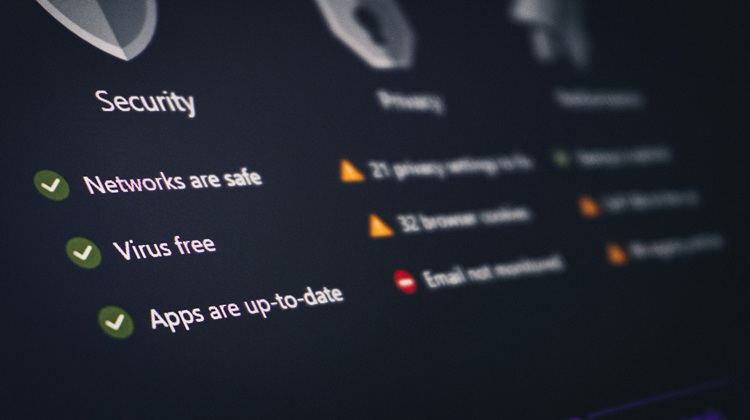A business inbox is no longer filled only with clumsy scams. Attackers now wield synthetic voices, cloned faces and AI-generated backdrops that look exactly like the real CEO. Deepfake phishing has moved from novelty to board-level menace. Organisations of every size now grapple with a threat that can slip through traditional email filters and fool even video‑conference veterans. Security firms report that attempted deepfake impersonations have tripled across Europe in the last twelve months, making it the fastest‑growing social‑engineering technique on record. Europol’s 2025 Serious and Organised Crime Threat Assessment flags a sharp rise in AI-enabled impersonation, warning that criminal groups harvest executive media to build doppelgängers for payment fraud.
This guide unpacks why deepfakes work, what the latest scams look like and – most importantly – how a small firm can verify identity before money or data walks out the door. Every step fits lean budgets and relies on clear processes as much as technology. Alongside financial safeguards, the roadmap also highlights how quickly reputational damage can spread when a convincing fake goes unchallenged.
Why deepfakes succeed
AI models need only 30 seconds of audio to clone a voice and a handful of photos to forge a face. In May, Cisco Talos researchers documented criminals who used real-time voice cloning during a video call, persuading finance staff to reroute supplier payments. Victims said nothing felt odd – even the background matched the boss’s home office.
Traditional phishing filters struggle. Attachments look clean, domains appear legitimate, biometrics can be spoofed. Attackers exploit two human instincts: we trust familiar voices and we rush when a senior leader applies time pressure.
For a refresher on classic phishing, see our earlier blog Emerging Phishing Trends and How to Stay Ahead. Deepfakes build on those tactics, adding a shockingly realistic human layer.
 Anatomy of a deepfake breach
Anatomy of a deepfake breach
- Reconnaissance – scammers scrape LinkedIn, webinars and podcasts for executive audio and video.
- Model training – free AI tools create a voice clone or animated face in hours.
- Initial hook – an urgent email schedules a “quick call” on a confidential deal.
- Real-time engagement – the victim joins, sees a known face and hears a trusted voice. A forged invoice or reset link appears.
- Pressured execution – the deepfake urges secrecy and speed, citing regulators or looming deadlines.
- Cover-up – recordings vanish or are edited, leaving scant forensic traces.
Every stage can be disrupted by the controls we outline next.
The real-world cost
- £20 million transferred when audio deepfakes mimicked a regional director.
- HR teams hired candidates whose video interviews were AI avatars feeding ChatGPT answers.
- Contact centres report a surge in account-reset calls featuring cloned customer voices.
A widely cited industry case study describes how AI‑cloned audio of a chief executive persuaded an employee at a UK energy firm to wire £200 000 to a bogus overseas supplier. Money isn’t the only loss – brand trust evaporates once customers learn that even a voice on a video call can be forged.
Seven-point defence plan
1 Build an identity-verification policy
List actions that always need out-of-band confirmation: new bank details, invoice changes, bulk data exports.
2 Create a trusted-channel matrix
Define approved second channels – a Signal call can confirm a Teams message; an internal chat can verify a supplier email. Print the matrix beside every finance screen.
3 Improve video-call hygiene
Enable waiting rooms, lock meetings after all join and block screen-share control from unknown accounts. Teach staff to spot micro lip-sync lag – a common giveaway.
4 Deploy liveness and watermark tools
Many platforms now prompt random head movements or flash dynamic QR codes. Teams watermarking deters screen recordings that fuel future fakes.
5 Rotate safe-words monthly
If the CFO calls from a new number, staff request the phrase. No phrase – no payment.
6 Run deepfake drills
Quarterly, IT plays a cloned manager voice requesting password resets. Staff must refuse and escalate.
7 Monitor executive digital footprint
Count how many high-resolution videos, interviews and podcasts leaders share. Less public media means fewer training samples for attackers.
Selecting the right tools – a vendor checklist
| Question | Why it matters | Ideal response |
| Public or private AI model? | Public models leak detection methods. | Private or heavily customised. |
| Recording-retention period? | Longer storage increases liability. | ≤ 30 days, EU data-centre. |
| Raw log export via API? | Needed for SIEM correlation. | JSON or Syslog available. |
| English false-positive rate? | High rates drain attention. | < 2 %. |
| External red-team tests? | Proves tool survives scrutiny. | Annual third-party report. |
Even budget vendors should satisfy these basics; otherwise place them on the amber list.
Culture makes the difference
Annual slides won’t cut it. Swap to fortnightly “security espresso” sessions – five-minute stories posted in Teams. One week covers a real attack; another reminds staff to verify safe-words. Nominate crypto-champions in each department to answer questions and relay incidents.
Peer verification strengthens controls: mandate two approvals for payments over £5 000 or bank-detail changes. Two brains can detect odd voice inflections a filter misses.
Executives must practise voice hygiene – record podcasts in controlled studios, strip metadata and disable raw downloads. Less raw audio, less cloning accuracy.
Our guide Cyber Security Training for Your Staff outlines gamified micro-training that keeps interest high.
 Board-level metrics
Board-level metrics
| Metric | Target | Purpose |
| High-risk actions verified out-of-band | 100 % | Proof policies work. |
| Deepfake drill success rate | ≥ 90 % | Measures human resilience. |
| Executive media-exposure review | Quarterly | Limits cloning material. |
| Safe-word validation failures | < 2 per quarter | Tracks discipline. |
Numbers secure budget faster than warnings.
Incident response – layering people, process, tech
An impersonation breach unfolds quickly, so speed and clarity matter:
- Detection – liveness failure, staff suspicion or an anomalous payment alert.
- Triage – confirm via second channel, capture any forensic artefacts (screenshots, call logs).
- Containment – freeze the transaction, disable affected accounts.
- Eradication – revoke tokens, rotate passwords, purge synthetic recordings.
- Recovery – restore trusted backups if systems were accessed.
- Lessons-learnt – update safe-word list, tweak drills and brief the board.
Time each stage during tabletop exercises. Aim for detection-to-containment in under ten minutes – achievable with rehearsals and clear roles.
Budget snapshot
| Item | Year-one cost | Note |
| SPF, DKIM, DMARC hardening | £0 | Open-source scripts. |
| Voice-detection plug-in (50 users) | £600 | Freemium to mid-tier. |
| Browser isolation (40 users) | £1 200 | SaaS licence. |
| Deepfake drill tooling | £400 | AI-clone generator. |
| Micro-training rewards | £300 | Gift cards & quiz platform. |
| Insurance premium reduction* | –£500 | Carrier discount if controls proven. |
*Several UK insurers now shave 5-10 % from cyber-premiums for firms with deepfake safeguards – check your policy.
Net spend ≈ £2 000 – far less than a single fraudulent transaction.
Integrating with existing frameworks
Deepfake controls dovetail with zero-trust and identity governance:
- Zero-trust – treat voice/video as untrusted until verified; revoke sessions on doubt.
- IGA – add liveness-check status to user attributes; block actions if tests fail.
- DR testing – include synthetic-media scenarios so comms teams can calm clients swiftly.
One roadmap cuts duplication and unlocks shared budget. It also streamlines SIEM analysis, because liveness‑check events and payment approvals feed the same log pipeline, making anomalies easy to spot during audits. Moreover, weaving synthetic‑media clauses into vendor‑risk assessments ensures suppliers uphold identical verification standards, closing gaps beyond your own perimeter.
Regulatory horizon
Draft UK Digital Information Bill clauses make ignoring deepfake red flags sanctionable. The EU AI Act labels synthetic-media misuse “high risk”, mandating safeguards by 2027. Several insurers already demand proof of controls at renewal. The UK Information Commissioner’s Office has hinted that organisations failing to verify synthetic‑media interactions could face GDPR‑scale penalty multipliers once formal guidance lands.
Future signals to track
- Neural voice watermarks baked into OS kernels – flags AI audio.
- Cross-platform liveness APIs – share verification tokens between apps.
- GPU-usage alerts – cloud providers flag bulk voice-clone training.
- Browser labels – real-time markers on AI-generated video.
Monitoring these innovations enables calm budgeting rather than panic buys.
Case study – Highbury Consulting cuts off a scam in 30 seconds
A fake CEO video call requested an “urgent” £55 000 transfer. The finance lead spotted slight lip-sync drift, invoked the safe-word and stalled the caller. A quick Signal ping to the real CEO confirmed fraud. Monthly drills kept the team calm – no money lost, no fines, no apology tour. Post‑incident forensics showed the attackers had pieced together more than three hours of publicly available keynote footage to craft the convincing fake, highlighting how freely shared media can backfire. Highbury has since trimmed executive online exposure and installed a lightweight voice‑clone detection plug‑in on all finance workstations, adding only seconds to the approval workflow while boosting confidence across the board.
Action checklist
- Today – print the trusted-channel matrix, brief finance.
- This week – enable DMARC quarantine, lock meeting rooms.
- 30 days – run the first voice-spoof drill, track reaction times.
- Quarter one – roll out liveness tools to exec laptops.
- Year one – reach 90 % drill success, embed deepfake clauses in supplier contracts.
Pin the list by the kettle and tick items monthly.
Deepfake phishing is real, evolving rapidly and exploiting our instinct to trust sight and sound. Staying vigilant and refining your defences each quarter will keep the odds stacked in your favour as synthetic media grows ever more sophisticated. Clear policies, repeat drills, supportive tech and a culture of scepticism let even lean teams verify identity before funds or data vanish.
Ready to fortify your defences against synthetic impersonation? Contact the Mustard IT team for a plain-spoken audit and receive your complimentary Deepfake Detection Checklist.













